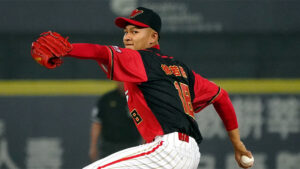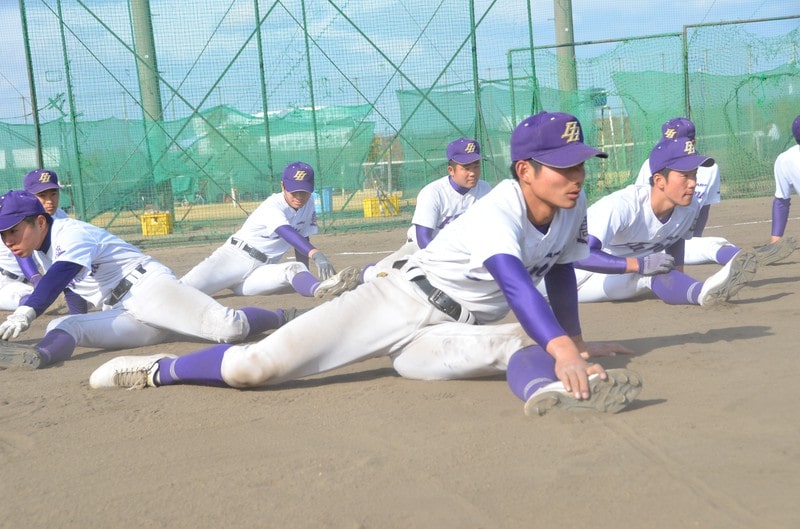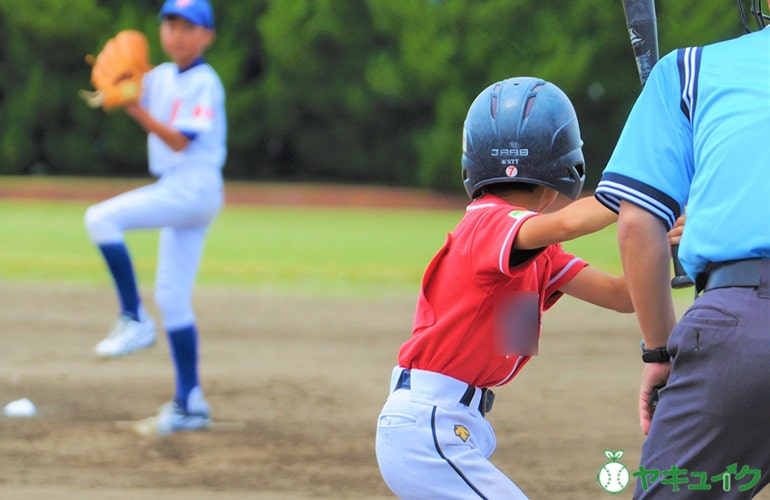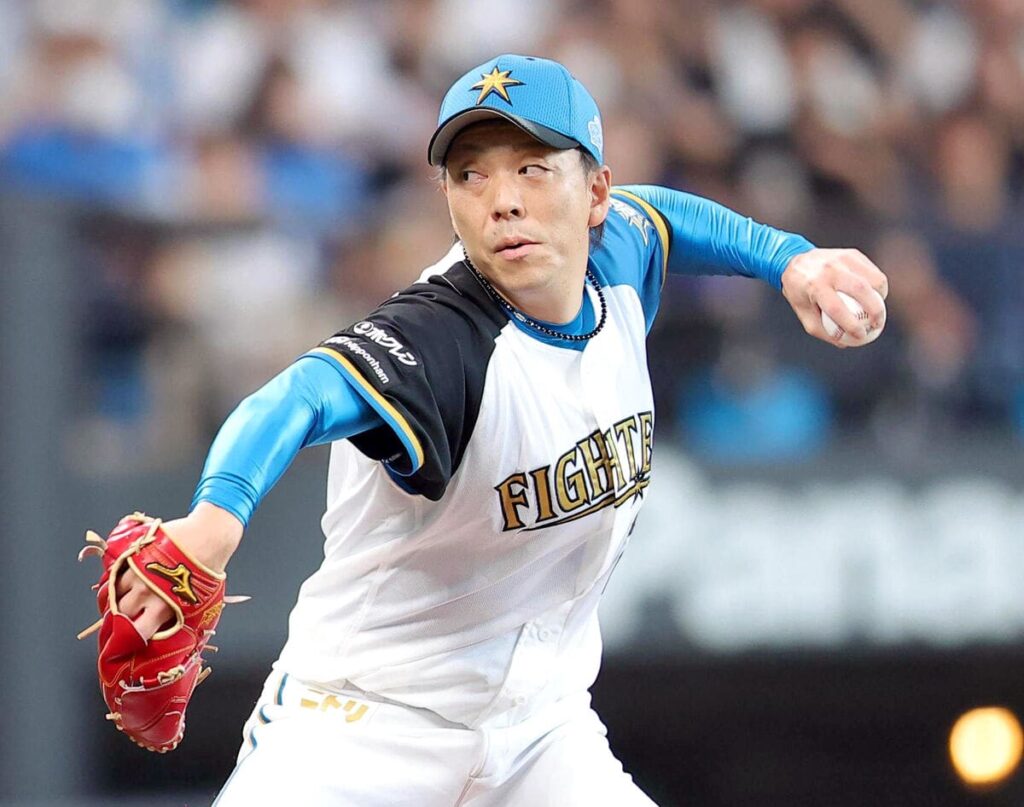
During a baseball game, the bench is an important place where players, managers, and coaches wait and plan the progress of the game and tactics.
The bench is not just a place to wait, it plays an important role in determining the success or failure of the game.
This article provides a detailed explanation of the definition, history, role, and function of the bench in baseball.
The history of the bench began with the birth of baseball and has evolved over time.
We’ll delve into all aspects of the bench, including the roles of bench members, instructions and strategies during the game, bench atmosphere and team dynamics, and more.
In addition, modern benches are equipped with comfortable furniture and medical facilities, and are designed to maximize players’ performance.
Bench culture and etiquette are also important factors that players and staff must maintain.
What happens on the bench – how players behave during the game, how they cheer, memorable scenes and episodes – are elements that further enhance the appeal of professional baseball.
Let’s start by looking at the definition of a bench and its basic role.
目次
What is a baseball bench?
In baseball, a “bench” refers to the place where the manager, coaches, and substitute players wait during a game to give instructions and make strategies while observing the game.
The bench is not just a place to wait, it is an area that plays a vital role in determining the success or failure of the game.
Here we will take a closer look at the definition of a bench and its basic role.
Definition and basic role of bench
Baseball benches are usually located on the sidelines of a stadium field.
This is important so that managers and coaches can directly monitor the progress of the game and quickly convey any necessary instructions to players.
The benches are equipped with seats where the manager, coaches, substitute players, trainers, etc. wait during the game.
Basic Role
-
Strategic planning and direction :
- One of the most important roles of the bench is to plan and execute a strategy. The manager or coach will monitor the flow of the game and make substitutions or tactical changes at the appropriate time. For example, this includes changing pitchers or instructing players to bunt. These instructions are given by sign or verbally.
-
Player management and conditioning :
- The bench is also where the physical condition of substitute players and players in the game is managed. Trainers check the condition of substitute players and provide stretching and treatment as necessary. In addition, preparations are made to respond quickly if a player gets injured during a game.
-
Communication and teamwork :
- The bench is also a place for communication for the entire team. Players exchange information with each other and receive instructions from the coach. This increases the team’s sense of unity and makes cooperation during the game smoother. In particular, during important moments in the game, cheers and advice from the bench boost the players’ morale.
-
Match Observation and Analysis :
- On the bench, the progress of the game is closely observed, and data is collected and analyzed to plan the next strategy. Coaches and analysts observe the movements of the opposing team and the performance of the players, and use this information to refine their strategies. This allows them to respond quickly during the game.
-
Preparing for substitutions :
- Substitute players wait on the bench and are ready to be thrown into the game. They must always be prepared to play as pinch hitters, pinch runners, or defensive replacements at the manager’s instruction. Also, when a pitcher is replaced, a relief pitcher moves from the bullpen to the bench and joins the game.
The bench has many roles and can have a huge impact on the progression of the game and the team’s performance.
The bench is an essential part of running a baseball game, providing proper instructions and planning strategies, managing and conditioning players, communicating with the team, and observing and analyzing the game.
Fulfilling these roles effectively will enable a team to win games and maintain high performance throughout the season.

History and evolution of benches
In baseball, the bench is an important place where the manager, coaches, and substitute players wait and plan strategies during the game.
Its history and evolution have progressed alongside the history of baseball itself.
Here we take a closer look at the origins of benches, their evolution, and the design and function of modern benches.
The origins and evolution of the bench
Baseball benches originated when baseball began to become popular in the United States in the late 19th century.
Initially, the benches were simple wooden benches for players to sit on between matches.
During the game, the players sat on a bench near the sideline of the field, watching the game and waiting for their turn to play.
In the early 20th century, the role of benches gradually became more important and facilities improved.
The bench is now used not only by managers and coaches to direct the game and for players to wait, but also as a place to share the flow of the game and strategies.
During this period, roofs were installed on the benches to provide protection from the sun and rain.
Furthermore, in the second half of the 20th century, benches became increasingly more sophisticated.
As professional baseball became more popular, facilities began to be developed to improve players’ comfort and performance.
This includes providing better seating, drinking water and ice packs, and installing workout equipment.
Design and Function of Modern Benches
Modern baseball benches are equipped with a variety of features to maximize the performance of players and staff.
These features aid in player comfort, health management and strategy planning.
-
Comfortable seats :
- Modern benches feature padded or reclining seats so players can relax between games and recharge before the next play.
-
Climate control :
- Many benches are equipped with air conditioners and heaters to provide a comfortable environment depending on the weather conditions. These facilities have a significant impact on players’ performance, especially during games in hot summer months or cold climates.
-
Medical Equipment :
- Modern benches are equipped with space for trainers, first aid kits, ice baths and other medical facilities, allowing for quick response to injuries or illnesses during a match.
-
Strategic planning areas :
- There is also a space on the bench where managers and coaches can analyse the match and devise strategies. Digital devices such as whiteboards and tablets are used to analyse data and share strategies in real time.
-
Communication tool :
- The stadium is equipped with communication tools such as intercoms and walkie-talkies to enable smooth communication between players and staff, enabling quick and accurate transmission of instructions.
The history and evolution of the bench is closely linked to the development of baseball itself.
As benches have evolved from the simple benches of the early days to the sophisticated benches of today, they have come to play an increasingly important role in game management.
Going forward, bench facilities and functions will continue to evolve in order to improve players’ performance and comfort.

The role of the bench members
During a baseball game, the bench is staffed by the manager, coaches, players, and behind-the-bench staff, each of whom plays an important role.
These members help with match strategy, player management, match execution and work together to maximise team performance.
Here we will explain in detail the roles and assignments of each member.
Roles and placement of managers, coaches and players
The role of the director
The manager is the person in charge of the entire team.
They plan strategies before the match and make important decisions such as substitutions and tactical changes during the match.
The manager sits in the center of the bench, watching over the progress of the game, communicating with the coaches and giving instructions to the players.
The supervisory role includes:
- Strategy planning : Analyze the opposing team before the match and develop the optimal strategy.
- Deciding on substitutions : Substitute players at the appropriate time while monitoring their status during the match.
- Team motivation management : Boost player morale and maintain the motivation of the entire team.
The role of the coach
The coach supports the manager and provides guidance to the players in each position.
Each coach has their own area of expertise, for example batting coach, pitching coach, defensive coach, etc.
The role of the coach includes:
- Coaching players : Provide technical guidance to players during matches and practice to improve their performance.
- Support for strategy implementation : We provide support to concretely implement the strategies established by the director.
- In-Game Advice : Provide real-time advice to players to optimize their performance.
Player roles and placement
Substitute players are waiting on the bench, ready to play depending on the situation during the game.
Reserve players are often brought into the game as pinch hitters, substitute runners, or defensive replacements.
The player roles include:
- Preparation for competition : We warm up and prepare mentally so that we can play in a match at any time.
- Observe the game : Watch the flow of the game and wait while thinking about what you should do next.
- Support your team : While on the bench, cheer on other players and boost team morale.
The importance of behind-the-bench staff
The behind the bench staff play a vital role in supporting the players, managers and coaches.
This includes trainers, analysts, equipment handlers, etc.
The duties of the back bench staff include:
-
trainer :
- Health Management : Check the health of your players and deal with any injuries that may occur during the match.
- Rehabilitation support : Supporting players in recovering from injury and ensuring they perform at their optimum.
-
Analyst :
- Data Analysis : Analyzes in-game data in real time and provides feedback to managers and coaches.
- Strategy planning support : Analyzes the opposing team’s strategies and player performance to help plan strategies for the next match.
-
Equipment Officer :
- Equipment management : Manage the equipment used by players, such as bats, gloves, and helmets, and keep them in top condition at all times.
- Match preparation : We prepare before the match and clean up after the match, creating an environment where players can concentrate on playing.
Each member on the bench has an important role to play and contributes to the overall performance of the team.
When the manager, coaches, players and backbench staff work together as one, the team can achieve its best results in games.
Understanding these roles and using them effectively is key to victory.

Bench instructions and strategies
Bench instructions and strategy are very important elements in a baseball game.
The instructions and signs given by the manager or coach from the bench can greatly influence the flow of the game.
In addition, bench work and tactics during the game are also factors that directly affect the team’s victory or defeat.
Here we’ll go into detail about the instructions and signs from the manager, as well as bench work and tactics during the match.
Director’s instructions and signatures
Instructions from the manager are an important means of controlling the progress of the game.
These instructions are usually communicated as signs to coaches and players.
The signs are often given through specific actions such as hand movements, hat position, or uniform tug.
This allows you to communicate your instructions without the opposing team being able to read your intentions.
Main types of instructions
-
Bunting Instructions :
- A bunt may be ordered to change the flow of the game. Bunting is an important tactic for advancing runners and is effective in increasing scoring opportunities.
-
Stealing instructions :
- By instructing runners to steal bases, you can shake up the opposing defense. Stealing signs are determined based on the timing and the runner’s speed.
-
Pitcher change instructions :
- Pitcher substitutions may be ordered to change the flow of the game, aiming to create favorable matchups against the opposing batters.
-
Defensive shift instructions :
- By instructing a specific batter to use a defensive shift, a tactic is adopted to make it easier to get an out on a hit. Defensive shifts are made based on the batter’s tendencies and data.
Bench work and tactics during the match
Bench work during a match is a tactical activity carried out jointly by the manager, coaches, and players.
This allows you to control the flow of the game and aim for victory.
The Importance of Benchwork
-
Real-time analysis and response :
- On the bench, real-time analysis is carried out as the match progresses, observing the opposing team’s movements and players’ performance, and quickly formulating tactics accordingly.
-
Player status management :
- We constantly check the physical condition of our players and make decisions such as resting them or substituting them as necessary, thereby supporting them to perform at their best.
-
Communication and morale :
- Communication on the bench is very important. Players share information and encourage each other to raise team morale. Encouragement from the manager and coach also contributes greatly to maintaining the players’ motivation.
Tactical Execution
-
Executing the game plan :
- In order to execute the game plan that was made before the match, the team will give appropriate instructions from the bench, including pitcher selection and batting order changes.
-
Flexible tactical changes :
- You will need to be flexible in changing your tactics depending on the flow of the game and the situation. For example, you may need to adjust your defensive position depending on the pitcher’s pitches and the opponent’s tactics.
-
Data-driven decisions :
- In modern baseball, data analysis plays a key role: the bench analyzes data in real time and makes tactical decisions based on it, which can increase the probability of winning.
Instructions and signs from the manager, bench work and tactics during the game are very important elements in a baseball game.
With these elements working properly, teams can control the flow of the game and seize victory.
Understanding the importance of bench instruction and strategy and utilizing it effectively is key to success.

Bench atmosphere and team dynamics
The atmosphere on the bench has a big impact on the players’ performance during the game.
Quality communication and morale are directly linked to team dynamics and are key factors in paving the way to victory.
Here we will explain in detail about communication and morale on the bench, and maintaining teamwork and motivation.
Communication and morale on the bench
Communication on the bench is essential for players, coaches and managers to share information in real time and respond to the situation on the match.
Proper communication helps players be better prepared for the next play.
The Importance of Communication
-
Information sharing :
- On the bench, players, coaches, and managers share information as the game progresses. For example, information shared in real time such as the tendencies of the opposing pitcher, changes to defensive shifts, and adjustments to a batter’s batting form is important.
-
Tactical Communication :
- Tactical instructions from managers and coaches are communicated to players accurately and quickly, allowing them to perform the best possible play at the given moment.
-
Encouragement and support :
- On the bench, teammates encourage and support each other, offering words of encouragement to players who make mistakes and praising players who play well, helping to boost morale.
Maintaining teamwork and motivation
Teamwork is essential to consistently perform well throughout a match.
Good teamwork on the bench allows the players to come together as one and play the game as one.
Building teamwork
-
Shared goal setting :
- Setting a common goal for the entire team and working towards it creates a sense of unity. A strong desire to win increases the motivation of the players.
-
Division of roles :
- When each player understands his or her role and fulfills it, the performance of the entire team improves. For example, if a relief pitcher plays an important role in the final stages of a game, his or her preparation and mentality are important for the team.
-
Building trust :
- Strong trust between teammates is an important factor in improving teamwork. By understanding and trusting each other’s playing styles through practice and games, teamwork will go smoothly.
Staying motivated
-
Creating a positive atmosphere :
- A positive atmosphere on the bench goes a long way in keeping players motivated. Smiles, jokes, and positive encouragement will help relieve players’ tension and allow them to play in a relaxed state.
-
Share your success stories :
- Sharing success stories during a game boosts the morale of the entire team. For example, when there is a home run or a good defensive play, sharing the joy with everyone strengthens the team’s sense of unity.
-
Demonstrating leadership :
- It is also important for captains and veteran players to demonstrate leadership and lead the team. Their ability to remain calm and inspire the team even in difficult situations will help keep the other players motivated.
The atmosphere on the bench and team dynamics have a huge impact on the outcome of a match.
Proper communication, high morale, strong teamwork and maintaining motivation are the keys to leading a team to victory.
By thoroughly understanding and implementing these elements, your team will be able to work together and perform at their best.

Bench equipment and features
During a baseball game, the bench is an important place where players and staff wait and watch the progress of the game.
The bench facilities are designed to ensure player comfort and maximize performance.
The stadium also has extensive medical facilities and emergency response capabilities, enabling it to respond quickly to any situation that may occur during a match.
Here we will go into detail about the bench facilities and comfort, as well as medical equipment and emergency response.
Bench facilities and comfort
The bench facilities are designed to provide comfort for players and staff.
Time on the bench during a game is an important time to watch the game progress and prepare for the next play.
Therefore, a comfortable environment is required.
-
Seat design :
- The seats on the benches are highly cushioned and designed to prevent fatigue even when sitting for long periods of time. Some benches are also equipped with reclining seats, allowing players to relax.
-
Climate control :
- The benches are equipped with air conditioners and heaters to maintain a comfortable environment regardless of the season or weather. This protects the players from the heat of summer and the cold of winter, helping them to concentrate on their performance.
-
Hydration Station :
- Hydration stations are set up on the benches, stocked with cold water and sports drinks to ensure players stay properly hydrated during games.
-
Relaxation Area :
- Some benches have been fitted out with relaxation areas for players, equipped with massage chairs and cushions to help players reduce fatigue.
-
Communication facilities :
- The bench is equipped with equipment that allows managers and coaches to quickly communicate with players, including intercoms and walkie-talkies, allowing them to give instructions in real time.
Medical Facilities and Emergency Response
It is not uncommon for players to get injured or become ill during a match.
For this reason, the bench is fully equipped with medical facilities and is ready to respond quickly.
-
First Aid Kit :
- A basic first aid kit is always available on the benches, with plasters, disinfectant and bandages to treat minor cuts and scrapes.
-
Trainer Station :
- There is a trainer’s station near the bench where a dedicated trainer is always on hand to manage the players’ physical condition, administer first aid to injuries, and provide stretching and massages.
-
Ice baths and icing equipment :
- The bench is also equipped with ice baths and icing equipment, which allows players to cool muscles that become fatigued during the game, accelerating their recovery and preparing them for the next play.
-
Emergency medical response :
- The stadium is fully equipped with emergency medical equipment in case of serious injuries during a match. AEDs (Automated External Defibrillators), oxygen masks, stretchers, and other equipment are available, allowing for rapid response.
-
Collaboration structure :
- The medical staff behind the bench work closely with team doctors and hospitals to ensure a rapid response in the event of an emergency, providing an environment in which players can play with peace of mind.
The bench facilities and features are designed to keep players and staff comfortable and safe during games.
Comfortable seating, climate control, hydration stations and other features support athletes’ performance, while medical facilities and emergency response systems are in place to ensure the health and safety of athletes.
All of these facilities work together to enable teams to perform at their best and stay focused on the game.

Baseball Bench Culture and Manners
During a baseball game, the bench is where the players, manager, and coaches wait, watch the game, and plan strategies.
There is a unique culture and etiquette on the bench, which has a major impact on team unity and morale.
Here we will explain in detail the rules and etiquette on the bench, as well as some memorable moments and episodes.
Bench Rules and Etiquette
There are basic rules and etiquette that players and staff must follow on the bench.
These are important to keep the team in order and help the game run smoothly.
-
Quiet :
- Noise in the bench must be kept to a minimum, especially while the pitcher is pitching or during important moments. Communication must be kept to a minimum to improve concentration.
-
Stay organized :
- Keeping the bench tidy is essential. Place drinks, towels, equipment, etc. appropriately and do not obstruct the movement of other players or staff. Items used must be put away immediately.
-
Respect and courtesy :
- It is important to be respectful and polite to the manager, coaches, and teammates. Showing respect, especially to veteran players, is deeply rooted in the team culture.
-
Obedience to instructions :
- Instructions from managers and coaches must be followed promptly and obediently. Act immediately upon receiving instructions, as delays or disobedience may affect the performance of the entire team.
-
Positive Attitude :
- It is important to always have a positive attitude. Even if the game is going poorly, it is important to cheer on the team in a positive way and raise morale.
Famous scenes and episodes
There are many memorable moments and stories that took place on the bench in baseball history, and they hold special meaning for fans as well.
Below are some representative examples.
-
Encouragement from “God of Reversals” Hideki Matsui :
- When Hideki Matsui was with the Giants, his encouragement from the bench often helped the team to come back from behind. His positive attitude and leadership had the power to completely change the atmosphere of the team.
-
1996 Japan Series :
- During the match between the Orix BlueWave and the Yomiuri Giants, there were many scenes of players discussing strategies on the bench and encouraging each other. Ichiro’s performance and the support of his teammates were particularly impressive.
-
“Bench Clear” :
- There are also famous scenes where players from both teams rush out of their benches during brawls during games. For example, the bench clearing in a game between the Hanshin Tigers and the Yomiuri Giants in the 1980s was a symbol of the heated rivalry between the two teams.
-
Emotional retirement match :
- Many players leave the field during their retirement game surrounded by loud applause and tears from the bench. For example, the warm send-off from the bench at Shigeo Nagashima’s retirement game was memorable.
Bench culture and etiquette are important to ensure players and staff stay focused on the game and perform at their best.
Following these rules and etiquette will increase team unity and lead to success in the game.
In addition, memorable moments and stories from the bench add color to baseball history and become unforgettable moments for fans.





